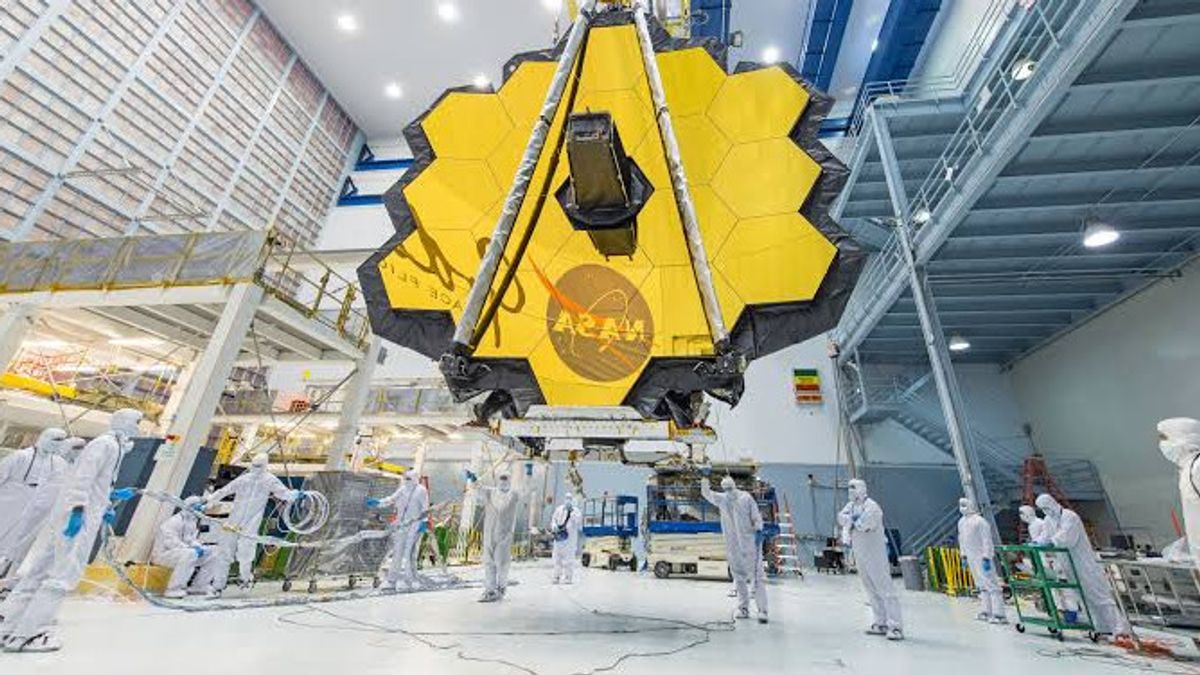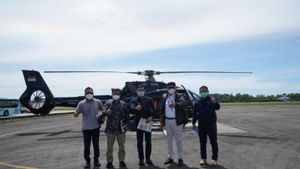JAKARTA - The process of deploying mirrors on the James Webb Space Telescope has ended, now the team on Earth is starting a new, more difficult challenge, namely aligning the mirror segments of the giant telescope.
Called a tougher challenge, because the Webb Telescope team had to go through a slow process for months. This is necessary to fine-tune the individual optics into one large, accurate telescope.
The main mirror of the telescope consists of 18 gold-colored hexagons made of beryllium, if the telescope mirror is depicted it resembles a regular mirror with a width of 6.5 meters.
It is known, the Webb Telescope also has a secondary mirror that is smaller in shape. This all requires careful adjustment to be in the right position to allow the telescope to be as accurate as possible.
To achieve this, the engineers began by sending commands to the 126 actuators that would drive the primary mirror segments as well as six devices that positioned the secondary mirrors to ensure that they functioned.
That way, they were able to start moving segments of the snubber occupied during launch to reduce vibration in a process that would take about 10 days.
In total, mirror adjustments will take about three months and will require a lot of minor adjustments and care.
"Getting there will require patience. Computer-controlled mirror actuators are designed for very small movements measured in nanometers," said Marshall Perrin, a scientist from the Space Telescope Science Institute, as quoted by Digital Trends, Sunday, January 16.
“Each mirror can be moved with extremely fine precision, with adjustments as small as 10 nanometers (or about 1/10,000 of the width of a human hair). Now we use the same actuator to move more than a centimeter. So this initial implementation is by far the largest step the Webb Telescope mirror actuator has ever made in space."
SEE ALSO:
In addition, each actuator needs to work individually for safety reasons, and can only function for a short period of time to limit the heat generated and spreads onto a very cold mirror, so it's going to be a long and slow process to get the mirror in perfect position.
“This may not be the most exciting period of the Webb Telescope assignment, but that's okay. We can take the time. "During the days when we slowly scatter mirrors, they also continue to cool slowly as they radiate heat into cold space," Perrin said.
Perrin adds that mirror instruments also cool gradually and are carefully controlled. While aligning the mirrors, the Webb Telescope also continues to glide slowly towards L2 as its main goal is to peer into the Solar System.
"Even though it's slow, it's steady doing it, for all the gradual processes that bring us each day a little closer to the ultimate goal of mirror alignment," concluded Perrin.
The English, Chinese, Japanese, Arabic, and French versions are automatically generated by the AI. So there may still be inaccuracies in translating, please always see Indonesian as our main language. (system supported by DigitalSiber.id)
















